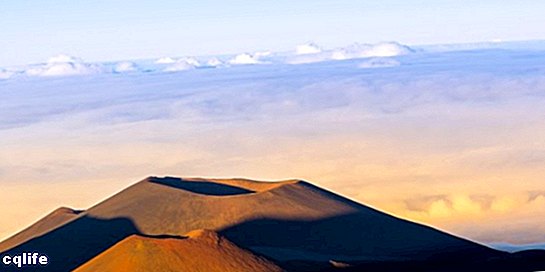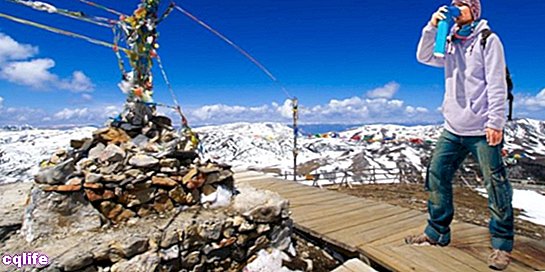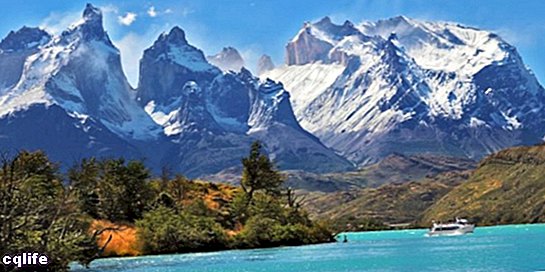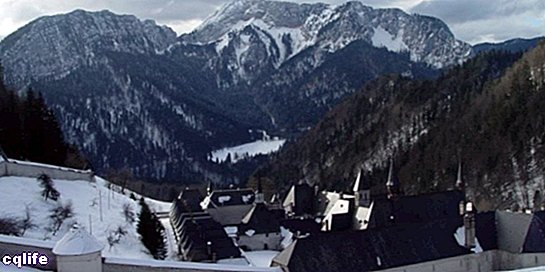- What is a mountain range?
- Formation of a mountain range
- Mountain weather
- Mountain range and sierra
- Andes mountains
- Himalayan mountain range
- Other mountain ranges in the world
We explain what a mountain range is, how it is formed and its differences with a mountain range. Also, how is the mountain climate and examples.
Mountain ranges are formed by the collision of tectonic plates.What is a mountain range?
The mountain ranges are extensive successions of moutains linked together, which often function as limit between countries. They originate in areas where I usually was transformed due to movement of the tectonic plates, causing the sediments to compress, rise above the land surface and originate various mountain ranges.
Mountain ranges often have high peaks. The elevation of its sediments can take various shapes and sizes, such as mountains, ranges, hills, mountains or hills.
Formation of a mountain range

A mountain range is formed by the movement of the tectonic plates of the Earth that collide with each other, fold and deform until they rise above the earth's crust. The sediments that lie on the surface are affected by external phenomena such as high temperatures, the soil erosion by the wind, the water erosion, among others.
Mountains can also be generated by underwater elevations (product of the movement of plates or Volcanic eruptions submarines). This is the case of the island of Hawaii and those that are around it, which make up a mountainous system below the ocean whose peaks appear above sea level, forming a group of islands.
The highest mountain in the world detected is Mauna Kea, in Hawaii. It consists of a volcano dormant, submerged in the Pacific Ocean. From base to top it measures 10,203 meters, but the visible part above sea level is 4,205 meters. The highest mountain, taking the sea level as a reference, is Everest at 8,850 meters (above sea level).
Mountain weather

The weather mountain (also called alpine climate) varies by location, relief and height of the mountain range. The climate of each surrounding region influences mountain temperatures from base to mid-elevation, and the higher the height of the summit, the greater the contrast with the region's climate.
From 1,200 meters above sea level, the temperature begins to become increasingly cold and humid, with abundant rainfall. The atmospheric pressure decreases due to altitude, which means that the pressure of the air is getting smaller and living beings it becomes difficult for them to breathe as they ascend.
Mountain range and sierra
Sierras are subsets of small mountains located in a larger mountain range, such as a Mountain range. The mountain range is characterized by having serrated or very pronounced elevations, but of medium height.
An example is the Sierra Negra de México, located between the limits of Veracruz and Puebla (which is part of the Neovolcanic mountain range). It consists of an extinct volcano and is the fifth highest mountain in the country with a height of 4,640 meters. It is a great tourist attraction for mountain biking and trekking.
Andes mountains

The Andes mountain range is a mountainous system of South America. It is the longest mountain range in the world with 8,500 kilometers in length and is the second highest (after the Himalayas) with an average elevation of 4,000 meters. Its highest peak is Aconcagua, with 6,960 meters high. It is located on an area of great seismic and volcanic activity.
The Andes mountain range was formed during the Mesozoic period. It extends from the current region of Táchira in Venezuela to Tierra del Fuego in Argentina (through Colombia, Ecuador, Peru, Bolivia and Chile).
Its journey continues south, forming an underwater mountain range called the “Austral Antilles arch” or “Scotia arch”, and some of its peaks appear on the surface of the ocean forming small islands.
Himalayan mountain range

The Himalayas, in Asia, is the highest mountain system in the world. Among the various mountains that make it up, Mount Everest stands out, the highest point on Earth that rises to 8,850 meters above sea level and is an icon for mountaineers around the world, due to the great challenge that it implies. climb it.
The Himalayas were formed about 55 million years ago. It has an extension of 2,300 kilometers and extends from the north of Pakistan to the state of Arunachal Pradesh (India), bordering the region from Tibet throughout its entire journey. It has an average height of 6,100 meters.
The three main river systems of Asia are born in the Himalayas: the Indus River, the Ganges and the Yangtze. These rivers also contribute to regulate the planet's climate, especially in the central regions of the Indian continent. The Himalayas are home to several glaciers such as Siachen (the largest in the world outside the polar regions), Gangotri and Yamunotri.
Other mountain ranges in the world

Other important mountain ranges in the world are:
- The Neovolánica mountain range (Mexico). It is a mountainous system made up of active and inactive volcanoes that runs through central Mexico from Cape Corrientes on the west coast to Jalapa and Veracruz on the east coast. The highest peaks such as Orizaba (5,610 meters), Popocatépetl (5,465 meters), Iztaccíhuatl (5,230 meters) and Colima (4,100 meters) stand out. Many of its valleys and basins are used for the farming and its soil rich in metals contains silver, lead, zinc, copper and tin.
- The mountain range of the Alps (Europe). It is the most extensive mountain system in Europe central, forming a mountainous arc of 1,200 kilometers length stretching from eastern France, passing through Switzerland, Italy, Germany and Austria. Several of its peaks exceed 3,500 meters in height and contain more than 1,000 glaciers. Throughout the history, numerous Christian monasteries have settled between the mountains of the Alps, in search of tranquility.
- The Rocky Mountain range (North America). It is a mountain system that extends from northern Alberta and the British Column, in Canada, to southern New Mexico. It has a length of 4,800 kilometers and peaks that are around 4,000 meters high. It contains important glaciers, such as the Dinwoody and the Gooseneck that are shrinking faster and faster as a result of the global warming (Since 1994, more than 400,000 million tons of glaciers have been lost worldwide).
- The Pyrenees mountain range (Spain and France). It is a mountainous system that extends from east to west between Spain and France (from Cape Creus in the Mediterranean Sea to the Cantabrian mountain range), with an extension of 430 kilometers. Its highest peaks are located in the central part of the mountain range and exceed 3,000 meters in height, such as Aneto (3,404 meters), Posets (3,375 meters), Monte Perdido (3,355 meters) and Pico Maldito (out of 3,350). At present, it has some small glaciers that are located above 2,700 meters in height.
- The Cantabrian Mountains (Spain). It is a mountainous system located in the north of the Iberian Peninsula, parallel to the Caspian Sea and that crosses Galicia, Austrias, Castilla, León, Cantabria and the Basque Country. It has a length of 480 kilometers. Its highest peaks are Torre Cerredo (2,650 meters), Torre del Llambrión (2,642 meters) and Torre del Tiro Tirso (2,640 meters). It has caverns that are part of the so-called “Trave cave system”, whose cavities reach 1,440 meters deep.
